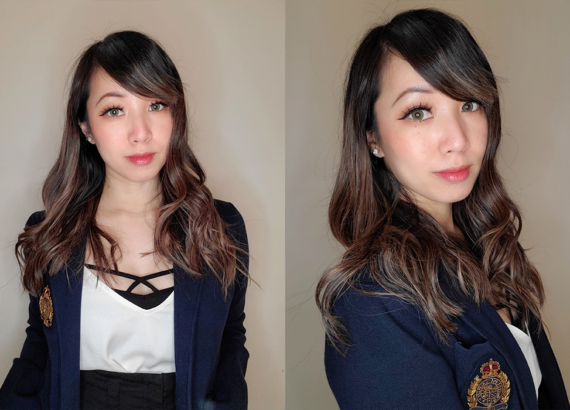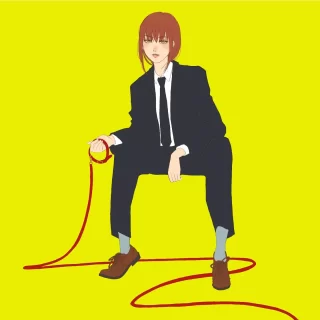When I rescued Mocha in 2015, I had no idea how much of an impact she would have in my life. She is my first dog, my first (fur) baby, and has been by my side for every big chapter in my life. She was there by my side when I got my first big girl job after graduating, cuddled me when I jumped from job to job, moved across the country, and started a completely new career. I have never had to cry alone these past seven (soon-to-be eight!) years because she has always been with me.
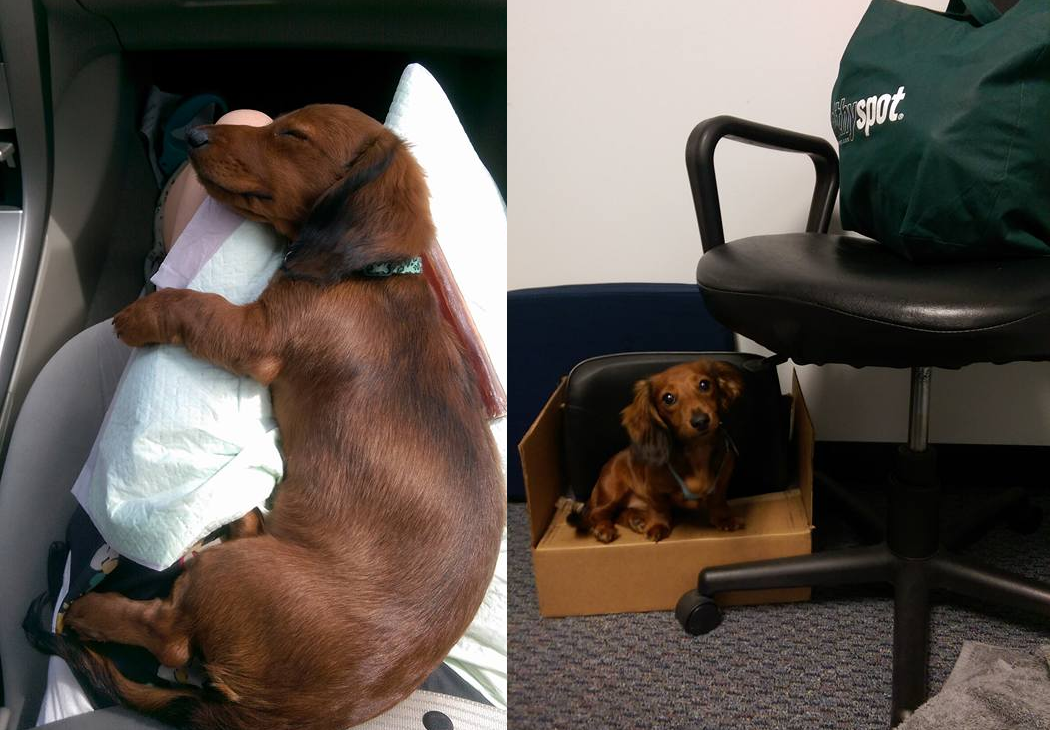
For those who aren’t aware, Mocha has been in and out of the vet’s since May 2022. After she turned 7 in May, I noticed that her appetite was suddenly insatiable, which was very unusual for her. Mocha has always been a slow eater and always knew when she was full. (The same CANNOT be said for her sister, Latte.) On top of that, she was constantly thirsty, gaining a rapid amount of weight, and becoming incredibly lethargic.
My gut knew something was wrong but I didn’t know what exactly it could be. Google searches turned up Cushing’s as a likely culprit as she was showcasing the typical “pot bellied” appearance. Since May, she’s been tested for so many things (diabetes, hypothyroidism, Cushing’s, Addison’s disease, x-rays, ultrasounds, and so much more), but every result came back normal. Nothing seemed to be amiss. By all intents and purposes, minus the extra weight and slightly enlarged liver/kidneys, Mocha was charting as a healthy dog – except we knew that she wasn’t.

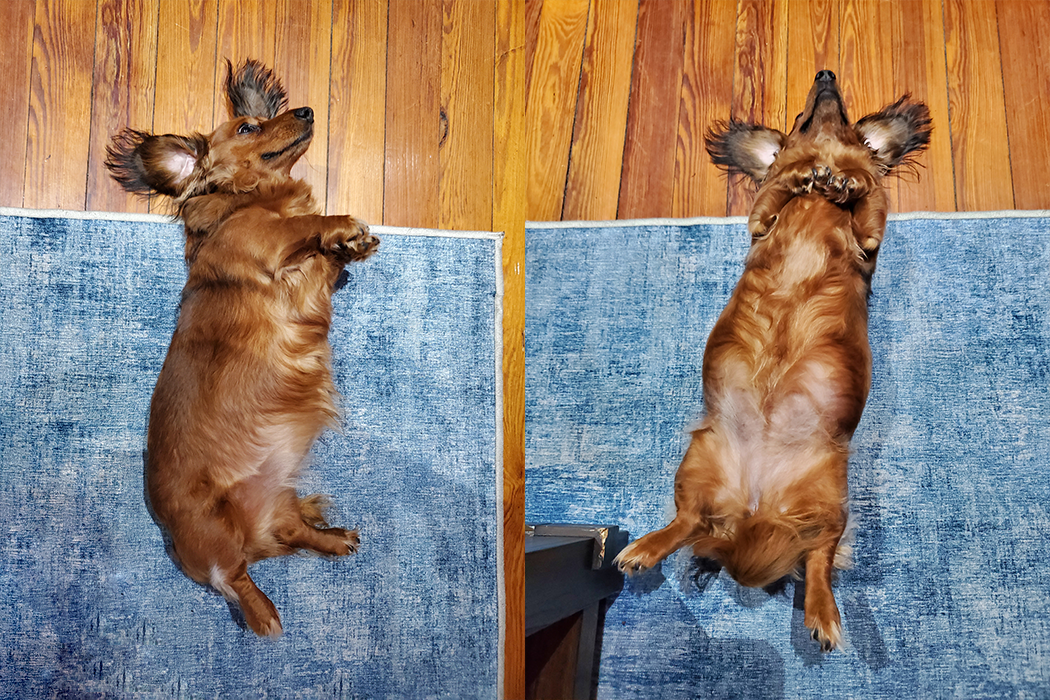
Her starting weight in May was around ~12lbs. For the entire time I’ve had her, she’s never exceeded this. By September, she had exploded to ~16lbs. In less than 4 months, she had gained 4lbs, which was a 1/3rd of her original weight. Her PCP, internal medicine specialist, and I were left scratching our heads.
Despite none of it making any sense, her healthcare team and I had a game plan: we’d treat her with a small dose of Vetyrol (which could still help, even if she wasn’t formally diagnosed with Cushing’s), I’d introduce more vegetables into her diet, and we’d go back to going on walks. So that’s what we did. I started her on 10mg of Vetyrol every day and taking her on 0.5-1mile walks every other day. Her internal medicine vet and I decided to do ACTH panels every 2 weeks (at least at the beginning) to make sure her body was adjusting to the medication.
It wasn’t until the middle of September that I noticed something strange: she started having trouble with her eyes.
She began to struggle seeing me, namely tracking my hand with her favorite treats. I’d wave my hand in front of her and she would lag 2-3 seconds behind. There were times where she didn’t follow it all all. She became scared of the dark. She became scared of the stairs, which she had faithfully moved up and down for the past four years.
I felt a pit in my stomach. Something didn’t feel right. Something was very, very wrong.
After some research, I stumbled across an article about sudden acquired retinal degeneration syndrome (SARDS) on PetHealthNetwork. SARDS is a disease that causes rapid and irreversible blindness due to changes within the retina. No one knows what causes it.
There was one particular sentence that stuck out to me while reading that article: The symptoms of SARDS is so similar to that of other endocrine disorders (diabetes, Cushing’s, etc.) that dog owners and vets always test for these, only to come up empty-handed. It isn’t until the dog begins to develop vision loss that the diagnosis of SARDS becomes suspect. Even then, not all veterinarians are aware of this possible diagnosis.
In my heart, I just knew SARDS was the real cause. Through my tears, I left a sobbing voicemail to her ophthalmologist, Dr. Anthony Alario of New England Veterinary Ophthalmology, to see if we could get scheduled for an electroretinogram (ERG) test.
Dr. Alario was able to call me back later that day. I walked him through her entire timeline: sudden increased appetite and weight gain starting in May, showing normal on all of her tests, and now her inability to follow my hand for treats. He told me that while he was 90% certain she had SARDS based off of the information I provided, we had to be 100% sure. The only way we could determine this was to have her take an ERG test. The ERG test is used to evaluate the dog’s photoreceptor function and is the only way to determine whether or not a dog has SARDS and will rule out any possible neurological problems.
These neurological problems could have been optic neuritis, which occurs when swelling (inflammation) damages the optic nerve. This is treatable and the blindness is reversible. OR, it could the absolute worst case scenario, which would be a brain tumor. Brain tumors (namely on the pituitary gland) are incredibly difficult to operate on and come with a lot of risk.
Thankfully, I was able to get scheduled in with Dr. Alario a week later (September 28, 2022). For most ophthalmologists in the Boston area, they weren’t booking until 2023 so I consider us to be very, very lucky.
After hanging up the phone, I cried more in those following 48 hrs than I had in the past 4 years.
These what-ifs plagued my mind day in and day out. I would cry sporadically throughout the days leading up to her appointment and seeing my dog struggle to maneuver around my apartment was absolutely heart breaking. It’s hard not to project your own thoughts and feelings onto your beloved pet and companion. All I could think over and over again was, “What if I lost my sight suddenly? How would I cope?”
And then the day for her appointment finally arrived.
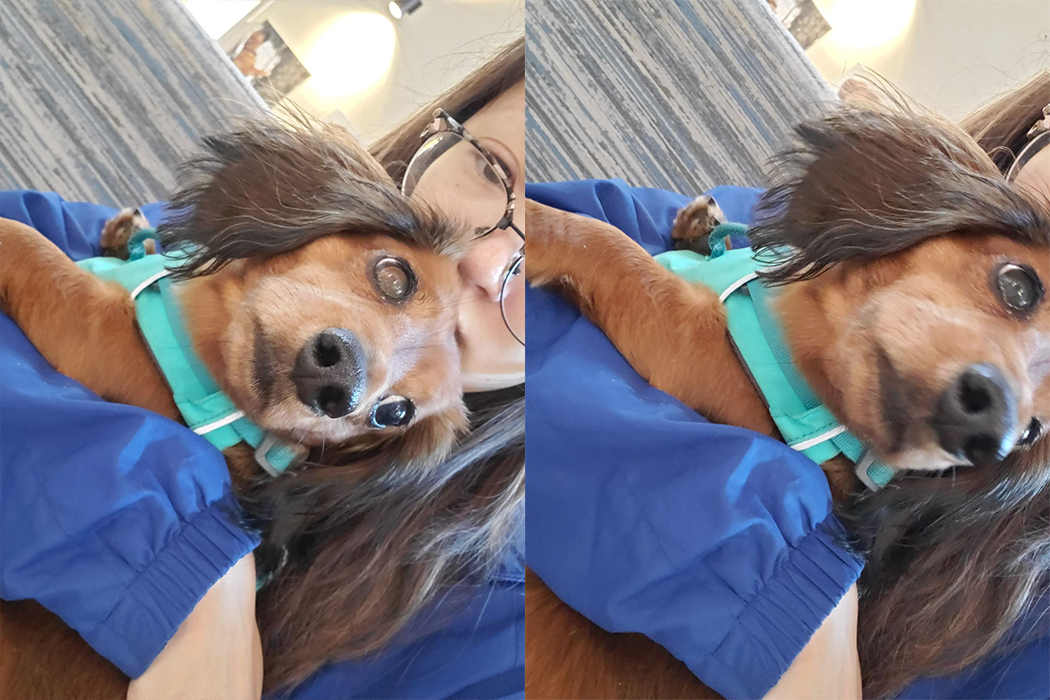
When we arrived, I was nervous. Dr. Alario and his employees were so warm and welcoming. We started off the visit with a quick eye test. Based off of the test, Dr. Alario said it was looking like a possible neurological issue. Her eyes looked normal. The vision in her right eye appeared to be good, but her left eye had some blindness. He didn’t see any immediate inflammation.
Overall, he was hopeful, but reminded me that this preliminary eye test DID NOT rule out SARDS. We would only know for sure after the ERG test.
I sat in the waiting room while they conducted it. The test itself took about 15-20 minutes. It felt like a century. When the door opened to reveal Mocha in a vet tech’s arms, I almost sobbed out of anxiousness.
Dr. Alario came to tell me the test results himself. Mocha was officially diagnosed with SARDS.
As soon as he said it, I felt my world crumbling and falling apart. I thought I had mentally prepared myself for this moment, for this scenario, but I still found my vision blurring with tears.
He started off by saying that we caught it very, very early. During the initial exam, he was worried as it looked like there was an artifact in her eye, which could possibly mean she had a brain tumor. Thankfully (in a weird, twisted way), she didn’t.
He showed me a normal ERG response versus what Mocha’s produced, which were completely flat lines. Her left eye, which he thought to be her worse eye, was actually trying to compensate and had a small spike of reaction, but ended up flat.
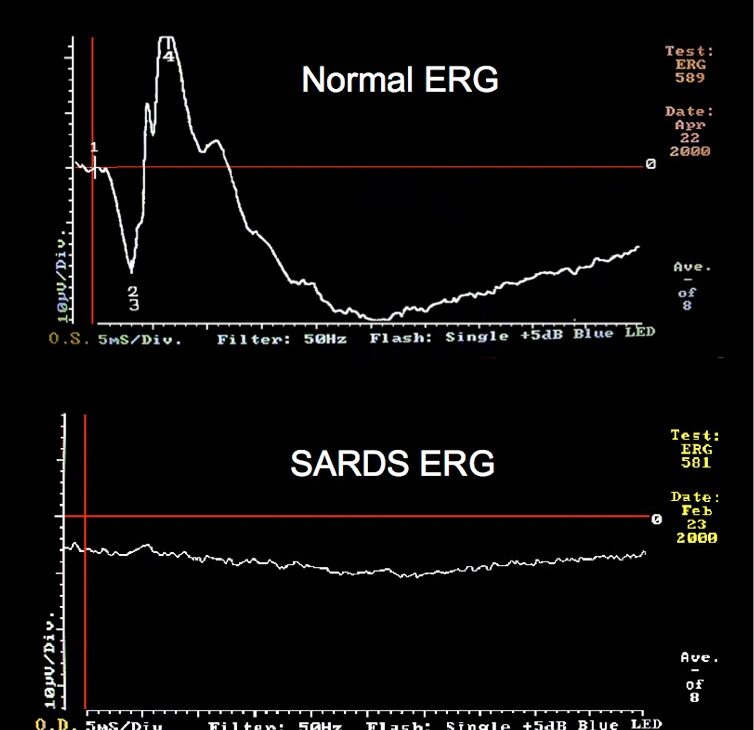
We talked about possible treatments. From my research online, I already knew that there weren’t any – at least not anything that was scientifically proven to work. He said that we could try to put her on immunosuppressants (such as Prednisone), but that it would be a shot in the dark. His professional recommendation was NOT to do this, as it would put her more at risk internally and open her up to more health problems.
I know people who were required to be on immunosuppressants and that medicine is not kind to human bodies. I knew that I didn’t want her on them. If they were so destructive and damaging to our own human bodies, I just couldn’t imagine how difficult it would be on her smaller, weaker body. I would rather her be blind and live a long, happy life than open her up to liver or kidney disease.
Dr. Alario stated that she would adjust, but would take time. It would be about 6-8 weeks before she would begin to show “normal” behavior again. The New England Veterinary Ophthalmology team was incredibly kind and empathetic during my visit. They put together a list of resources that I could use, along with advice on how I could help Mocha adjust to her new life.
After the visit, I drove Mocha home from New Hampshire, and spent the rest of my day cuddling and holding her in tears.

You might be thinking to yourself, “So where do we really go from here?”
On one hand, it’s easy to look at it logically: SARDS isn’t a death sentence. Dogs are resilient and they adapt. There was no doubt in my mind that Mocha would adjust and would continue to live a happy, fulfilling life.
But a larger part of me, the illogical side, felt so, so guilty. I felt like I had failed her as her mom. If I had figured this out back in May, would she have had a better chance? Would we have been able to stop the degeneration of her eyesight if we had figured out the root cause much earlier?
I want to remind everyone to be kind to yourselves. It’s tough to remember a lot of the time, but dogs are stronger than we could ever hope to be. While we can only project our own thoughts and feelings onto them of how WE would react if we encountered such a situation, dogs don’t think or react the way that humans do. They adapt. They overcome. Your pet can still live a long, happy, and fulfilling life with you.
There are support groups out there, specifically for SARDS. I joined Dogs with SARDS, a Facebook group to meet other owners in my position. That community has given me so much comfort and insight on how I could help Mocha adjust with her vision loss.
A recurring problem that I’ve seen amongst SARDS dogs is that there is a possibility that they do develop liver or kidney issues within 1-2 years of diagnosis. As part of her regimen, her internal medicine specialist and I have decided to keep her on the daily 10mg of Vetyrol. We’re now doing ACTH panels every 6 months, along with a full-body panel. I want to make sure that if she does develop any kidney or liver issues, we catch it as early as possible.
It’s been a little over 3 months since Mocha got her diagnosis and she has adjusted and improved so much in the past 90 days. With the Vetyrol, she’s capped her weight at around 16.8lbs. She attends hydrotherapy once a week where she has started building her joint and muscle strength again. Although our focus is on her losing weight, I’m just happy it’s no longer increasing.
She’s begun to have her old “spark” again. We had to adjust a few things and make a few lifestyle changes, but she’s been flourishing. Whereas she used to hate going outside (due to the fear of the unknown), she’s got a newfound love of sniffing around. She runs through the apartment, no longer scared of bumping into things. She’s returned to being the sassy lovebug that everyone knows and adores.
Every day is a journey, but every day it becomes easier and easier.
Resources
Support websites or groups:
Products for you and your pets:
- Muffin’s Halo (Bumper bar harness)
- Doggles (Goggles to protect the eyes)
- RexSpecs (Goggles to protect the eyes)
- FriendlyDogCollars (UK based website that sells disability specific leashes, collars, and more)
- Dog Appeasing Pheromone (For anxiety and stress)
Frequently Asked Questions
What is SARDS?
SARDS stands for Sudden Acquired Retinal Degeneration Syndrome. As Dr. Nancy Kay writes on PetHealthNetwork, “SARDS affects the thin-layered retinas which receive visual input and then transport this information to the brain via the optic nerve. In dogs with SARDS, the photoreceptors (rods and cones) and possibly the nerve fiber layers within the retinas undergo degenerative changes. The end result is complete blindness.”
SARDS causes rapid and (in a lot of cases) irreversible blindness.
What causes SARDS?
Due to its rarity, the cause of SARDS is unknown. There’s a theory that SARDS may be an autoimmune disease in which a misbehaving immune system attacks the body’s own normal cells. Dr. Nancy Kay writes, “However, this isn’t certain as dogs with SARDS who have received immunosuppressive therapy have not demonstrated any clear improvement in overall outcome compared to untreated dogs.” Others theorize that SARDS may be tied to elevated sex hormones.
Sadly, there is not enough research to determine the root cause.
What are the symptoms of SARDS?
- Increased thirst
- Increased appetite
- Sudden weight gain
- Complete and permanent blindness over a rapid course
- Each dog’s mileage may vary – some lose it overnight, some take weeks, other take months
- Stumbling
- Difficulty navigating at night
- A failure to track treats
How do I get my dog diagnosed for SARDS?
Contact your local animal ophthalmologist to conduct an electroretinogram (ERG). This is the only way to make sure that
Is there a cure for SARDS?
There is no known scientifically proven cure for SARDS. Some believe that vision can be restored with immunosuppressive therapy or , but there is not much research or data to back this up. If you’ve stumbled upon this page because you are looking for a way to restore your dog’s vision, I encourage you to take a step back and take a breath.
There are many shady practitioners who will happily capitalize on your emotional state and the fact that we will do ANYTHING, no matter the cost, to help our pets. I have seen posts online where someone has taken their dog to a professional they thought they could trust, only for their dog to begin experiencing respiratory issues and ending up on the brink of death. Please remain careful and skeptical.

